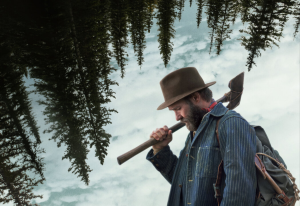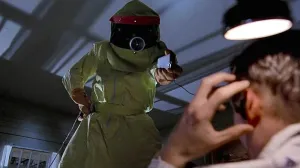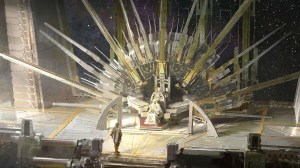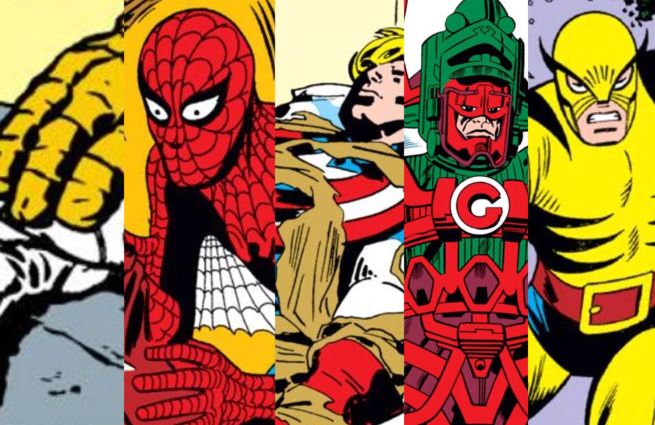
After several weeks filled with 60 other visually iconic Marvel moments from the past 75 years, ComicBook.com has reached the final 15 in its rundown of the 75 most memorable moments in the company’s history. The next 15 entries represent the absolute cream of the crop in Marvel history – the moments that helped build up one of the most successful and enduring entertainment companies of all time. These moments changed the industry, and gave credence to Marvel’s nickname, the “House of Ideas.”
Videos by ComicBook.com
If you want to check out what was previously ranked in the list before proceeding, follow these links to entries: #75-61, 60-46, 45-31 and 30-16.

15. Bullseye Kills Elektra
From: Daredevil #181 (April, 1982)
Easily the most iconic and shocking moment from Frank Miller’s character-defining run as writer/artist on Daredevil, the death of Elektra Natchios at the hands of the demented Bullseye has figured heavily into Daredevil mythology ever since. Elektra was first introduced by Miller a handful of issues earlier as a former lover of Matt Murdock’s before becoming an assassin for the Kingpin. The character was an immediate hit with fans, who couldn’t get enough of this femme fatale. The fact that Bullseye kills her with her very own weapon (sai), only further adds to the moment’s shock and awe for readers – who were apparently outraged after the story was published. Elektra has since been resurrected and has been a major character for Marvel ever since.

14. So Speaks Galactus
From: Fantastic Four #48 (March, 1966)
For years, Stan Lee and Jack Kirby’s Fantastic Four was the comic to read for fantastical, cosmic adventures. But the legendary creative team really took the reader’s imagination to new places with the debut of the god-like, devourer of worlds, Galactus. With the character’s introduction, along with his herald, the Silver Surfer, the storyline – commonly dubbed “the Galactus trilogy” – has been cited as one of the earliest appearances of Marvel’s larger cosmic-verse. By establishing unique and powerful beings from other galaxies, Marvel set the stage for the birth of some of its other cosmic properties, like Thanos, the Guardians of the Galaxy, Adam Warlock and Captain Marvel. Meanwhile, in Galactus, Lee and Kirby managed to capture the overall mood of paranoia and fear in the world as this world destroying creature was introduce in the midst of the Cold War between the U.S. and Soviet Union.

13. Jean Grey’s Suicide
From: X-Men #137 (September, 1980)
In the final chapter of the celebrated “Dark Phoenix Saga” storyline by Chris Claremont and John Byrne, Jean Grey, one of the original X-Men, sacrifices her life in order to save the universe from the dark phoenix force that has consumed her. Adding to this moment’s legacy is the fact that Claremont was hesitant to kill off Jean. But after the character wiped out an entire planet of people a few issues earlier, Marvel editor-in-chief Jim Shooter demanded that she be held accountable for her actions. Jean’s death was quite shocking for the time, as it was very rare for such a central character in a story to be killed off. Jean would be later resurrected (and killed again), but her original suicide is still considered a defining moment in one of Marvel’s most popular franchises.

12. Introducing the new Steve Rogers
From: Captain America Comics #1 (March, 1941)
While this comic could very easily be dismissed as an example of pro-American World War II propaganda, Captain America Comics #1 also gave birth to one of Marvel’s very first (and most enduring) superheroes in Steve Rogers, aka, Captain America. Joe Simon and Jack Kirby are the artists/writers credited with taking a skinny U.S. army hopeful in Rogers and transforming him into the legendary Red, White and Blue Avenger. The moment of Rogers seeing his brand new (taller, more muscular) body is later immortalized in 2011’s Captain America: The First Avenger.

11. Donald Blake Becomes Thor
From: Journey Into Mystery #83 (August, 1962)
In the very first appearance of one of Marvel’s core heroes, a doctor, Donald Blake, stumbles upon a secret cave while eluding space aliens (naturally). Blake finds a walking stick in the cave, whacks it against a boulder out of frustration and after a crack of lightening is transformed into Thor. More than 50 years later, the Blake identity is practically nonexistent while Thor is no longer worthy to wield his hammer, Mjolnir. But that’s glossing over decades of fantastic stories focused on the character from the likes of Stan Lee, Jack Kirby, Walt Simonson, J. Michael Straczynski, Tom DeFalco, Matt Fraction and many others.

10. Wolverine Comes Back for More
From: X-Men #132 (April, 1980)
This moment from an early chapter of the “Dark Phoenix Saga” is considered a key moment for the hot-headed, never-say-die tough guy characterization of Wolverine most fans identity with today. After getting beaten up and thrown into a sewer by members of the Hellfire Club, Wolverine emerges from the muck and is very ticked off. He brushes aside the “best shot” he took from Hellfire Club and vows to exact his revenge the only way he knows how – with claws un-snikt-ed. Prior to this moment, Wolverine was just one member of a team of mutants, but X-Men #132 instantly transformed him into an industry icon. It’s a scene that demonstrates that even when Wolverine doesn’t win the fight, he’s going to make it hellaciously entertaining to the end.

9. Spider-Man Raises the Rubble
From: Amazing Spider-Man #33 (February, 1966)
A defining part of Spider-Man’s personality has been his unbreakable spirit and dedication to uses his great powers in responsible ways (unless you count the half dozen or so times that he quit, but let’s just ignore that for this entry). In what many consider to be the pinnacle of the famed Stan Lee/Steve Ditko run on Amazing Spider-Man, Spidey is trapped underneath tons of rubble, with a serum he needs to save his Aunt May just out of reach. Spider-Man is ready to accept his failure, when he somehow musters the courage and strength to lift up the pile of metal and rock and free himself. It’s unquestionably one of the most inspiring moments in comic book history, and is probably the most enduring image from the celebrated Silver Age of Spidey.

8. Tony Stark Becomes Iron Man
From: Tales of Suspense #39 (March, 1963)
In what many fans and critics consider to be one of Marvel’s best origin stories, millionaire industrialist Tony Stark finds himself being held prisoner by communist terrorists (later updated to Middle Eastern terrorists). Stark is instructed to develop a weapon for his captors, but instead builds himself a suit of metal that allows him to escape – giving birth to the iconic Iron Man. Stark and Iron Man have gone on to be one of the most important characters in Marvel history, not only because of his role in teams like the Avengers, but also for his 2008 solo film which is responsible for launching the ultra-successful Marvel Cinematic Universe.

7. Here’s Wolverine
From: Incredible Hulk #180 (October, 1974)
Twenty-twenty hindsight has proven that a strange looking character introduced on the final page of an otherwise forgettable issue of Incredible Hulk marks the first appearance of one of Marvel’s most popular heroes. The mutant Wolverine makes his grand entrance attacking the Hulk – the first of many instances where the two squared off over the past 40 years. It wouldn’t be until Wolverine joined the second generation of the X-Men that the character would become the superstar he is today, but in terms of first appearance, there may be no more important comics from the Bronze Age than Incredible Hulk #180 and its sequel, Hulk #181.
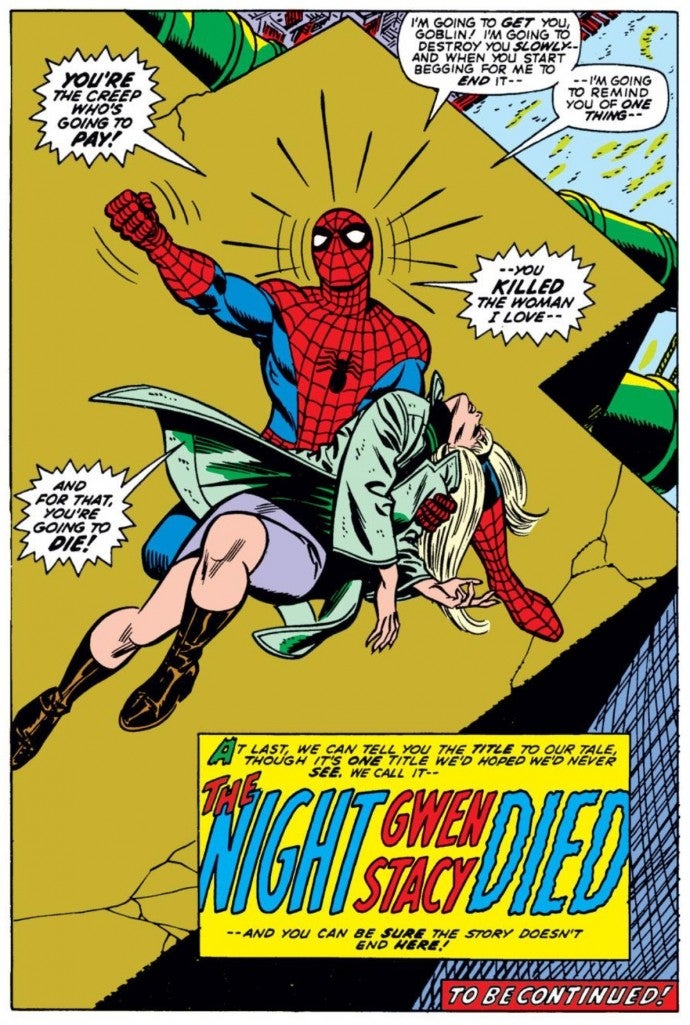
6. The Death of Gwen Stacy
From: Amazing Spider-Man #121 (June, 1973)
While the comic book industry was moving in a darker, more realistic direction in the early 1970s, the death of Peter Parker’s girlfriend, Gwen Stacy, is considered by many historians as the unofficial “end” of the Silver Age of comics. The fact that an innocent character, with no super powers or abilities, could be mercilessly killed by one of the hero’s adversaries – and for the hero to fail in saving the girl to boot – was just an unheard of concept until Gerry Conway and Gil Kane collectively ripped the hearts out of readers in this story. While there are many memorable moments leading up to Gwen’s Death – Green Goblin pushing her off the bridge, and the ominous “snap” sound from her neck when Spidey tried to web her up to safety – the final image of Spider-Man vowing vengeance on the Goblin for “killing the woman I love” stands above all as one of the most dispiriting and shocking panels in comic book history.

5. Bruce Banner Gamma Bombed
From: Incredible Hulk #1 (May, 1962)
Another core member of the early “Marvel Age of Comics,” the Incredible Hulk is considered a perfect demonstration of what made the “House of Ideas” so unique and different from the competition during this era. In Bruce Banner/Hulk, Marvel had taken a classic Jekyll & Hyde story about the monster that exists within a man, and gave it an interesting twist that was inspired by the rise of the “Atomic Era” of science and technology in the 1950s-60s. The Hulk has gone on to be one of the industry’s most recognizable characters – the star of multiple movies, cartoons, video games and a long-running, live action television show in the late 1970s/early 80s that was one of Marvel’s first properties to generate such mainstream attention.

4. Captain America On Ice
From: Avengers #4 (March, 1964)
The decision to resurrect World War II character Steve Rogers, aka, Captain America, as a cornerstone hero for Marvel’s Silver Age was one of the very first steps in helping to eventually transform the Avengers into the company’s flagship superhero team. Emphasizing Cap’s one-time “iconic” status in the world of comic books, while giving the hero an extraordinarily clever “man out of time” biography lent instant credibility to the Avengers line-up, who, both on paper and in storyline terms, lacked a clear leader. Of course, Captain America would go on to be one of Marvel’s most popular and iconic characters away from his Avengers teammates as well – the star of his very own series for years (he also co-headlined a book with the industry’s first-ever African American hero, Falcon), two solo films, cartoons, video games, etc.

3. The All-New X-Men
From: Giant Size X-Men #1 (May, 1975)
It might be impossible for some to imagine a time where the X-Men were among Marvel’s most unpopular characters, starring in a book that was always on the verge of cancellation. In fact, by the end of the 1960s, a lack of fan interest forced the company to reprint old material under the banner of “Classic X-Men.” In what is unquestionably the most significant franchise reboot in comic book industry history, Len Wein and Dave Cockrum developed a whole new team of mutants for Professor Charles Xavier to guide as the next generation of X-Men. The second line-up included some of Marvel’s most iconic heroes – Storm, Colossus, Nightcrawler and some Canadian guy you might have heard of, Wolverine. For X-Men #94, Marvel ditched reprinting “classic” material and developed a whole new storyline for the team, bringing Chris Claremont on board to co-script with Wein. Billions of dollars later, the rest is history.

2. Spider-Man Discovers Uncle Ben’s Killer
From: Amazing Fantasy #15 (August, 1962)
Considered by many to be one of the greatest origin stories ever told, there are a number of moments in Amazing Fantasy #15 where one could argue that Peter Parker officially became Spider-Man – the scene where he was bitten by the radioactive spider, or the first time he went on television in his red and blue costume. However, Parker took the first small step on his long journey to becoming one of the world’s most iconic heroes the moment he captured the man who murdered his Uncle Ben and recognized him as the same petty burglar he indifferently let run by him (instead of stopping him) earlier in the comic. It was in that instant that Peter realized, “with great power – there must also come responsibility.” It’s also one of the cruelest twists in comic book history – a piece of dramatic irony that would make O’Henry proud. And of course it’s a moment that would haunt Spider-Man for the rest of his career.

1. Hands in a Circle
From: Fantastic Four #1 (November, 1961)
As the story has it, when Martin Goodman, the man who founded the publishing company that would go on to become Marvel Comics, heard about the success of DC’s newest team of superheroes, the Justice League, he called upon Marvel editor-in-chief Stan Lee to come up with his own version of a heroic supergroup. So Lee and Jack Kirby answered the bell by developing “Mister Fantastic” Reed Richards, “Invisible Girl” Sue Storm, “Human Torch” Johnny Storm, and “The Thing,” Benjamin Grimm. Together, they were the Fantastic Four, Marvel’s first supergroup and the cornerstone of what would later be known as the “Marvel Age of Comics,” referring to how the company transformed the industry by focusing on characters that readers could more easily relate to. The Fantastic Four had problems – they didn’t always get along, but they loved each other like a family (and would become a more official family when Reed and Sue married in a few years).
The image of the team putting their hands in the circle symbolizes the official birth of the “Marvel Age.” As such, it could be argued that without this moment – and the way the Fantastic Four resonated with readers – all of the comic book icons that soon followed (Hulk, Thor, Spider-Man, Iron Man, Daredevil, etc.) would have never had come into existence. So not only is the formation of the Fantastic Four Marvel’s most memorable moment, it’s easily it’s most important.

